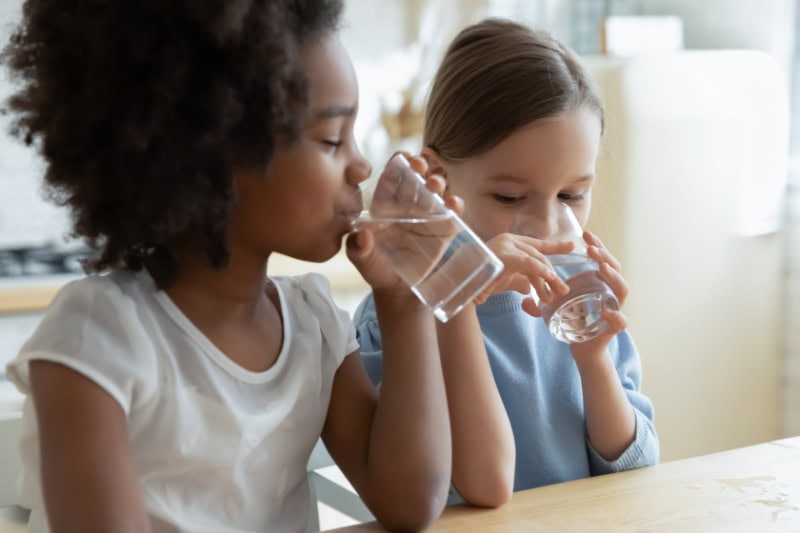Reduce Microplastics in Your Drinking Water

Microplastics are everywhere.
The microscopic pieces of plastic are so tiny you do not notice them in the air you breathe and the food you eat. You will not see them flowing from your kitchen faucet or taste them in a bottle of purified drinking water.
They may be invisible, but they are all around you, outside and inside your Clayton, home. Researchers have found microplastics in the air, water, oceans, seafood, vegetables and fruits, tea, colons, lung tissue, and feces. A 2022 study even identified microplastics in human blood and organs.
Installing the appropriate water treatment system will screen out microplastics from your tap water. At Tony LaMartina Plumbing, we can recommend a filter to stop particles at your main water supply line or the kitchen tap.
No single strategy will remove all microplastics from your home because they are so pervasive in the environment, but filtering your drinking water is a step in the right direction.
What Are Microplastics?
Microplastics are tiny plastic particles ranging from five millimeters to 100 nanometers in size. For comparison, a single human hair is approximately 100,000 nanometers wide. Microplastics measuring less than 100 nanometers are called nanoplastics.
Microplastics range in size, shape, and density and contain various chemicals, such as flame retardants and pigments. Manufacturers use microplastics in paints, cosmetics, and health products. Tiny plastic beads added to exfoliating face creams and some toothpaste are examples of this “primary” microplastics category.
Plastics do not decompose the way organic materials do. If not recycled, discarded plastics pollute rivers, lakes, and oceans, fill garbage dumps, and litter the environment. Secondary microplastics are small pieces that break off plastic items such as water bottles, plastic bags, single-use cups, and straws.
Clothing made of polyester, spandex, acrylic, and other synthetic materials can shed secondary microplastic fibers that become airborne in your Clayton, home or wash off in the laundry.
Microplastics In Drinking Water
Wastewater, surface runoff, and sewer overflow after a flood are a few ways microplastics can enter the water supply.
A 2019 study by the University of Newcastle in Australia for the World Wide Fund For Nature suggests that individuals ingest approximately 2,000 tiny plastic pieces—about five grams equal to the weight of a credit card—every week. Most of the plastic is in tap water and bottled water.
Do Microplastics Harm Your Health?
The short answer is yes. However, more research is needed to pinpoint how extensive microplastics can negatively affect the human body. Preliminary findings are concerning and have led to a push for more in-depth research and regulations regarding microplastics in manufacturing.
Some chemicals used in making plastics are considered health hazards. For example, bisphenol A (BPA), found in plastic packaging and household products, can affect children’s brains and behavior, according to the Mayo Clinic. The chemical also is linked to cardiovascular disease, type 2 diabetes, and increased blood pressure.
Additionally, some polyfluoroalkyls (PFASs) are microplastics or may be used to coat plastics that break down into microplastics. Research on PFAS exposure has shown links to causing an assortment of health issues, including but not limited to:
- Kidney cancer
- Testicular cancer
- Changes in liver enzymes
- Increased cholesterol levels
- Prenatal and postnatal developmental issues
How to Reduce Microplastics
Implement a strategy to lessen the impact of microplastics in your Clayton, home. Avoid using single-use plastic items such as cups, straws, and bags. Recycle plastic packaging and use a refillable water bottle rather than buying bottled water. Consider wearing clothing made of organic fibers.
A water treatment system can significantly reduce the number of microplastics in your tap water. Our experts at Tony LaMartina Plumbing can recommend a filter with pores small enough to screen out particles.
Reverse osmosis is another effective option. A reverse osmosis system purifies your drinking water by screening out microplastics and other contaminants at the tap. The system connects to plumbing from under the sink or on a countertop and uses a membrane with pores as small as 0.0001 microns to filter contaminants.
A home water distiller can remove microplastics and other contaminants by turning boiling water into steam and back into liquid, leaving plastic particles behind in the boiling process. Ask our pros if a distiller is your best option.
Protect Your Drinking Water Today
Safeguard your drinking water in Clayton, from microplastics, chemicals, and other harmful contaminants with a reliable water treatment system from Tony LaMartina Plumbing.
Clean, safe water is essential for your family’s health and everyday comfort. That’s why our team at Tony LaMartina Plumbing offers customized plumbing and water purification solutions designed to match your needs, lifestyle, and budget.
Whether you’re looking for whole-home filtration or a targeted drinking water system, we’re here to help. Give us a call at 314-403-2980 or request service online today to schedule a consultation and start enjoying better water at home.
